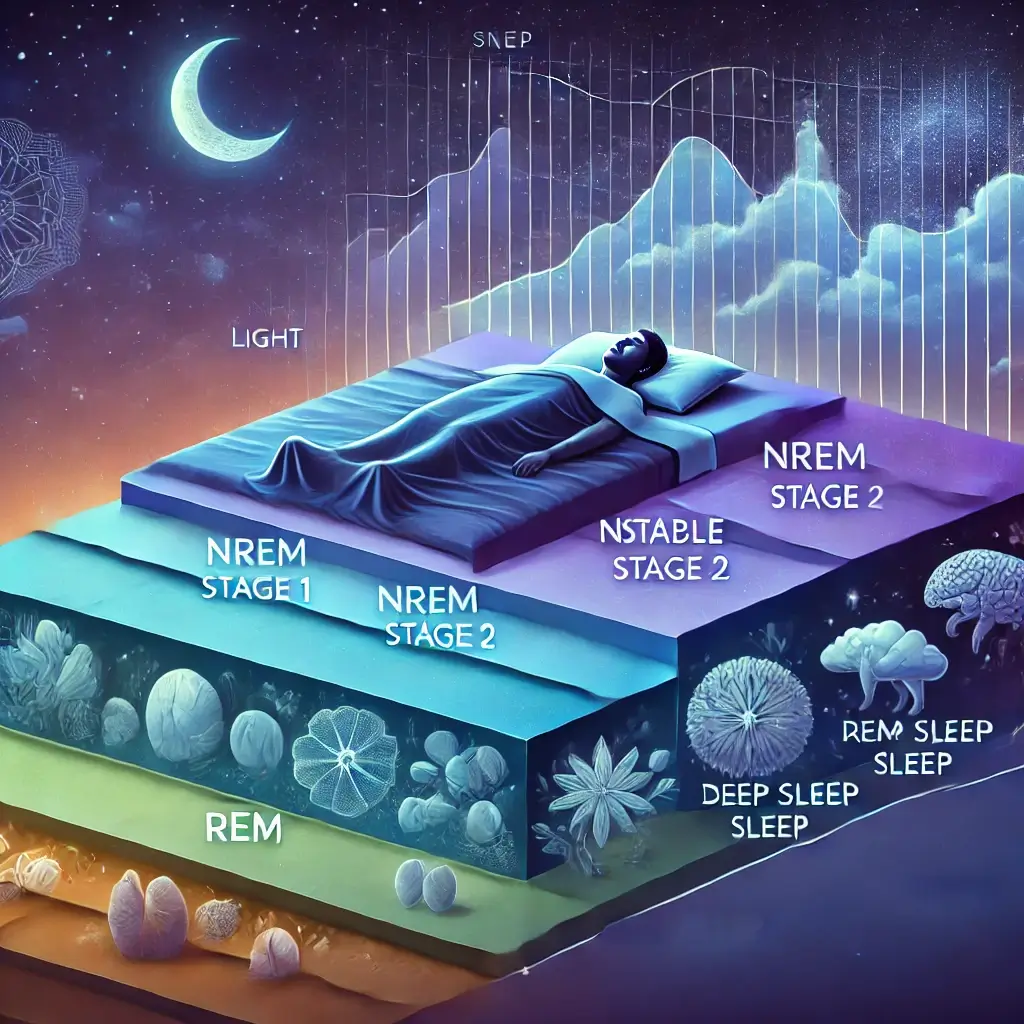The Essential Role of Sleep in Human Health
Sleep is more than just a nightly ritual; it is a vital biological function that restores the body and mind. At its core lies a carefully orchestrated process known as sleep architecture, encompassing distinct phases that work in harmony to promote physical, cognitive, and emotional well-being. This intricate system determines how effectively we recover, process memories, and prepare for the challenges of each day.
Modern Challenges to Sleep Quality
Despite its significance, many factors—ranging from modern lifestyles to medical conditions—disrupt the delicate balance of sleep architecture, leading to poor health outcomes. Understanding the science behind these phases is key to appreciating their role in human health and adopting practices that enhance sleep quality. This article dives into the phases of sleep, the importance of their durations, and groundbreaking research that highlights how sleep architecture impacts overall wellness.
Understanding the Four Phases of Sleep and Their Functions
Sleep architecture consists of four key phases, each with distinct physiological and neurological functions:
NREM Stage 1 (Transition to Sleep)
This is the lightest phase of sleep, where brain activity slows, and muscles begin to relax. Lasting only a few minutes, Stage 1 acts as a gateway from wakefulness to deeper sleep, accounting for about 5% of total sleep time.
NREM Stage 2 (Stable Sleep)
Comprising approximately 50% of total sleep, Stage 2 features unique brainwave patterns called sleep spindles and K-complexes. These patterns protect against external disruptions and prepare the body for more restorative phases, such as slow-wave sleep.
NREM Stage 3 (Deep Sleep)
Known as slow-wave sleep, this phase is the most restorative, promoting physical healing, tissue growth, and immune function. Slow delta waves dominate brain activity, and muscle activity reaches its lowest point. Deep sleep is particularly vital for overall health and typically constitutes 20-25% of sleep.
REM Sleep (Dreaming Stage)
Rapid Eye Movement (REM) sleep is marked by increased brain activity, rapid eye movements, and muscle paralysis. It accounts for roughly 25% of total sleep and is essential for memory consolidation, emotional processing, and creativity.
Latest Research Findings on Sleep Architecture
The significance of balanced sleep architecture has been extensively documented in scientific literature. A study in Sleep Medicine Reviews (2021) emphasized that each phase plays a unique and irreplaceable role in maintaining health. For instance, deep sleep is crucial for detoxifying the brain through the glymphatic system, while REM sleep strengthens neural connections associated with learning and memory.
Age-Related Changes in Sleep Patterns
Age significantly influences sleep architecture. Newborns spend up to 50% of their sleep in REM, reflecting the rapid development of their brains. By adulthood, REM sleep stabilizes at around 25% of total sleep, while slow-wave sleep declines with age. Older adults often experience fragmented sleep, which research in Frontiers in Aging Neuroscience (2020) links to cognitive decline and increased susceptibility to chronic conditions.
Health Consequences of Disrupted Sleep
Unbalanced sleep architecture has been implicated in various health issues. For instance, a 2020 study published in The Lancet Neurology found that insufficient REM sleep increases the risk of neurodegenerative diseases such as Alzheimer’s. Additionally, inadequate slow-wave sleep has been associated with poor immune function, hypertension, and metabolic disorders.
Modern Sleep Monitoring Technologies
Technological innovations like polysomnography and wearable devices have revolutionized sleep research. These tools provide detailed insights into sleep phases, enabling researchers to identify abnormalities and develop targeted therapies. For example, data from a 2022 study in Nature and Science of Sleep demonstrated how cognitive behavioral therapy for insomnia (CBT-I) restores healthy sleep architecture by improving the balance of NREM and REM sleep phases.
Evidence-Based Strategies for Better Sleep
To achieve balanced sleep architecture, consider these evidence-based strategies:
Consistent Sleep-Wake Cycle: Maintaining regular sleep and wake times helps regulate circadian rhythms, promoting uninterrupted cycles.
Relaxing Pre-Bedtime Routine: Engaging in activities like reading or meditation facilitates smoother transitions into sleep stages.
Screen-Free Evenings: Blue light from screens suppresses melatonin, delaying the onset of sleep and disrupting sleep architecture.
Healthy Lifestyle Choices: Regular exercise and a balanced diet rich in nutrients like magnesium and tryptophan can enhance sleep quality.
Managing Stress: Stress-reduction techniques, such as mindfulness or cognitive therapy, improve sleep onset and phase transitions.
Final Thoughts on Sleep Architecture
Sleep is a complex yet indispensable pillar of human health, and its architecture offers profound insights into how the body heals, learns, and grows. By understanding the role of each sleep phase and applying scientifically backed strategies, individuals can enhance their sleep quality and overall well-being. As research continues to advance, the potential for personalized sleep interventions promises even greater opportunities to unlock the full benefits of restorative sleep.
Scientific References
Frontiers in Aging Neuroscience. (2020). Sleep architecture and cognitive decline in older adults.
Lancet Neurology. (2020). REM sleep and the risk of neurodegenerative diseases.
Nature and Science of Sleep. (2022). The efficacy of CBT-I in restoring sleep balance.
Sleep Medicine Reviews. (2021). The role of sleep phases in cognitive and physical health.
